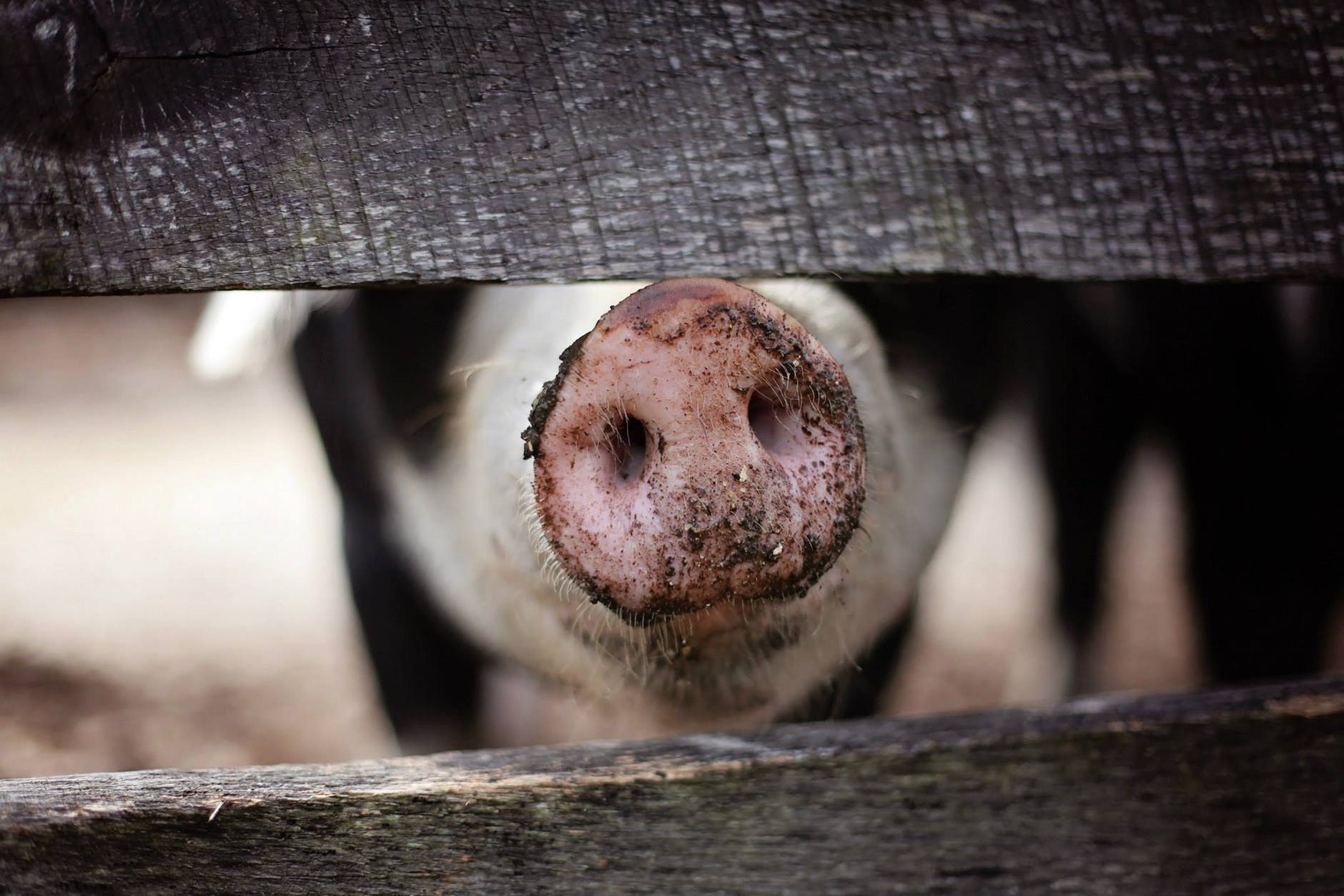
Pig poo is a big problem. Commercial pork production involves large farms where thousands of pigs are crammed together in what is called Concentrated Animal Feeding Operations (CAFOs). When you have lots of pigs in confinement, you also have lots of pig manure.
Hog farms process the manure by setting it out in large anaerobic treatment lagoons, adding water, and letting the poo decompose until the sludge can be sprayed onto fields as a fertilizer. In the meantime, problems happen.
Among the problems are horrible smells, contamination of groundwater, and the release of methane gas into the atmosphere. Methane acts as a greenhouse gas but has 25 times more potential for warming the atmosphere than carbon dioxide.
Communities located near CAFOs, environmental agencies, and grassroots environmental organizations are demanding solutions to these problems, and one large-scale pork producer has found an innovative method for addressing the challenge by turning pig poo into electricity.
Smithfield Makes Energy with Pig Manure
Among the largest pork producers in the U.S. is Smithfield Foods, Inc. According to an article published in National Geographic, in Duplin County, North Carolina where Smithfield has over 500 CAFOs, the company’s facilities generate two times more waste each day than the whole of New York City.
Recently, Smithfield Foods embarked on an effort to develop a solution to their pig poo problem by capturing the smelly and harmful methane in the lagoons, digesting it with the use of bacteria, and using the resulting gas as a fuel to power electrical generators.
To do this, Smithfield Foods started by expanding its subsidiary company Smithfield Renewables in 2017 to reach its goal of reducing greenhouse gas carbon emissions by 25 percent over the next six years.
Smithfield Renewables is investing in building the necessary infrastructure at the hog farms and meat processing plants to convert the manure into the renewable energy source. When the systems are in place, the company will recoup a sizable portion of its investment by saving on electrical costs. They will also receive carbon credits which will further improve their bottom line.
Smithfield’s ultimate plan is to build manure-to-energy plants at most of its hog farms in North Carolina, Missouri, and Utah. Over the next 10 years, they expect to have 90 percent of their hog farms capturing methane from hog waste and converting it into electricity, most of which will be used by the farms themselves.
How Pig Manure Turns into Renewable Energy
Methane is a gas similar to natural gas, and it can be used as a fuel in a kitchen stove or burned in a generator to produce electricity. Methane rises up from the manure lagoons where hog waste, water, and a high-carbon additive such as straw or switchgrass is added to boost the process. Bacteria then break down this mixture, releasing methane.
By installing a cover over the lagoon, hog farms create a methane digester, capturing the methane and then piping it to a nearby generator to burn and produce electricity. Methane requires little processing before it can be consumed as a fuel. However, it is expensive and difficult to compress methane and transport it, so it is best used nearby to where it is generated.
Smithfield Foods and Smithfield Renewables are paving the way for other large-scale livestock farms to develop similar systems for converting manure into energy. If you’re interested in joining the movement, there are a number of Smithfield Foods jobs available to anyone looking to make a difference.
Currently, pig poo and other manures create significant problems for the environment and local communities, but before long, they may revolutionize energy production and be something we are all thankful for.
